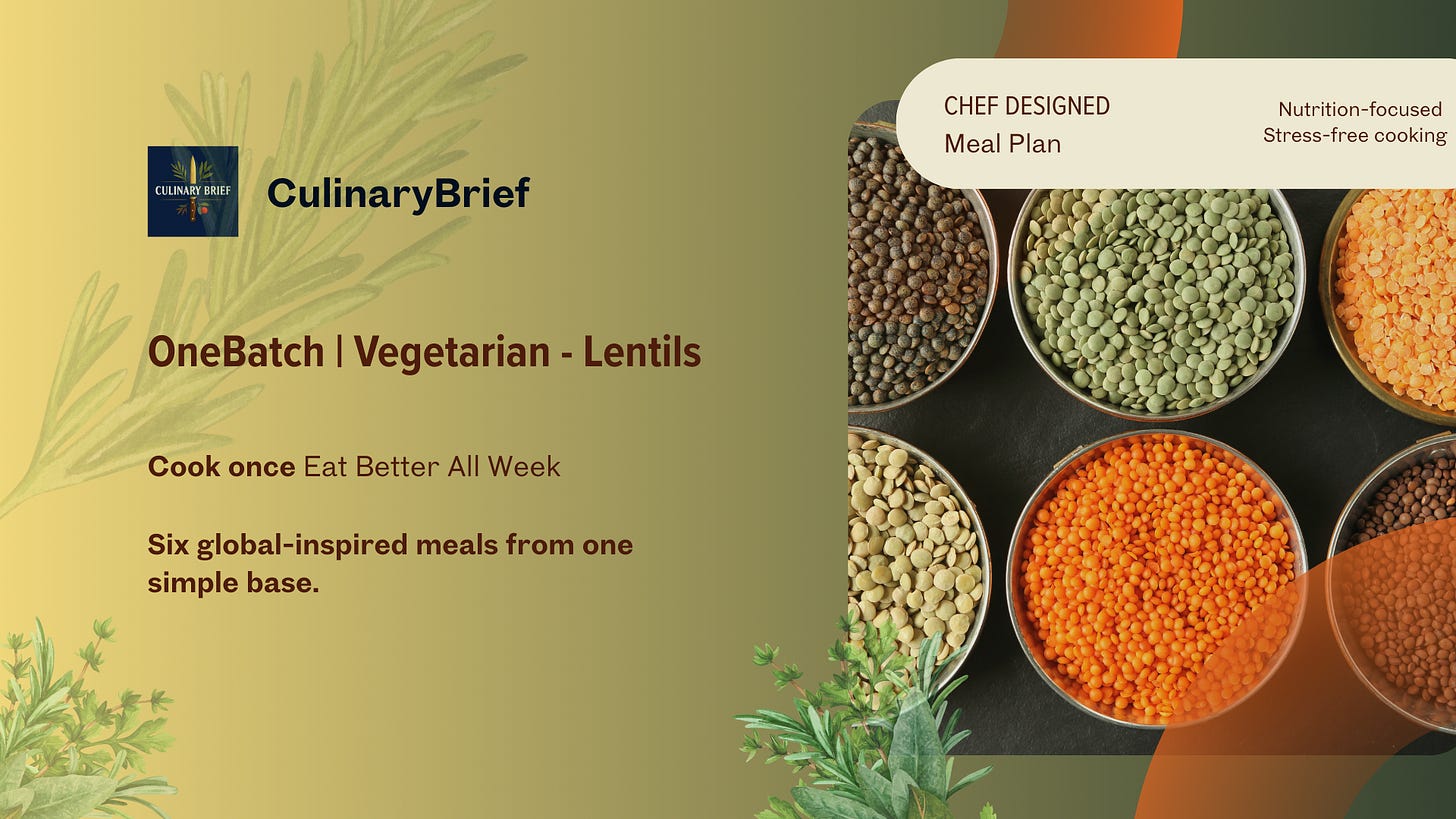The 3 Mistakes That Make Meal Prep Boring (And How to Fix Them)
Professional Chef Remixes Meal Prep
You spent two hours on Sunday cooking. By Wednesday, you’re staring at the same container of chicken and rice for the fourth time. By Thursday, you order takeout.
Sound familiar?
Here’s the thing: meal prep isn’t boring. But the way most people approach it? Yeah, that kills variety fast.
After years of batch cooking in professional kitchens and at home, I’ve noticed three patterns that make meal prep feel like a chore instead of a system. The good news? They’re all fixable.
Mistake #1: You’re Batch Cooking Complete Meals Instead of Building Blocks
The Problem:
Most people cook five identical meals on Sunday. Chicken, rice, and broccoli in five containers. By Wednesday, you’re bored. By Thursday, you’ve given up.
Why it happens:
Every meal prep tutorial shows rows of identical containers. It looks organized, but it’s a one-way ticket to flavor fatigue.
The Fix: Batch Components, Not Meals
Cook one well-seasoned protein base. Then transform it across different formats throughout the week.
Here’s how it works with something like Tuscan Yogurt Chicken:
Monday: Chicken Orzo Salad with feta and lemon
Tuesday: Chicken Flatbread Wrap with roasted peppers
Wednesday: Tzatziki Bowl with quinoa and cucumbers
Same protein. Different grains, sauces, and formats. Completely different eating experience.
This is exactly what restaurants do. They don’t make a new chicken dish from scratch for every order. They batch the protein and build different plates around it.
Key principle: Same protein, different context = different meal.
Mistake #2: You’re Ignoring Texture
The Problem:
By day three, everything is soft, mushy, or soggy. Your salad is wilted. Your chicken tastes like cardboard. Your wrap fell apart.
Why it happens:
You’re sealing hot food in containers (hello, steam condensation). You’re dressing salads in advance. You’re storing crispy things next to wet things.
The Fix: Protect Texture Like a Chef
Professional kitchens obsess over texture because we know it’s half the eating experience. Here’s how to keep your meal prep fresh:
Cool components before sealing. Let everything sit 5-10 minutes after cooking. This prevents steam from building up and making everything soggy.
Pack sauces separately. Always. Use small lidded cups for dressings, tahini, yogurt sauces. Anything wet stays separate until you’re ready to eat.
Add fresh elements at serving time. Herbs, crunch (nuts, seeds, crispy chickpeas), and acid (lemon, lime, pickled onions) go on right before eating. They don’t survive well in sealed containers.
Store grains slightly undercooked. They’ll finish cooking when you reheat them. Nobody wants mushy quinoa on day four.
Real example: In the cold soba bowl from our lunchbox system, the noodles stay completely separate from the sesame-soy sauce. You toss them together right before eating. That’s why they still taste fresh on Friday.
Key principle: Texture is half the eating experience.
Mistake #3: You Think Variety Means Cooking Six Different Things
The Problem:
You believe that eating different meals means cooking different meals. So you either cook six things on Sunday (exhausting) or you eat the same thing all week (boring).
Why it happens:
Nobody teaches you the remix method. You think variety requires more work.
The Fix: Use the Remix Formula
Here’s the framework we use in the OneBatch system:
Same base + different grain = new meal Lentils + quinoa = grain bowl Same lentils + sweet potato = shepherd’s pie
Same base + different sauce = new flavor profile Chicken + lemon-yogurt = Mediterranean Same chicken + BBQ sauce = American comfort food
Same base + different format = new experience Lentils in a bowl = dinner Same lentils in a wrap = lunch Same lentils in a curry = completely different meal
Here’s proof it works: Our Garlic & Herb Lentils become six completely different meals:
Mediterranean wraps with tahini
Indian-spiced curry with coconut milk
Shepherd’s pie with mashed potatoes
Grain salad with feta
BBQ sloppy joes
Smoky bowls with roasted vegetables
One batch. Six meals. Same base ingredients, completely different eating experiences.
Key principle: Variety through variation, not duplication.
The Bottom Line
Meal prep doesn’t have to mean eating the same thing five days in a row.
When you batch components (not full meals), protect texture with smart storage, and use the remix method, you get variety without extra work.
That’s the system professional kitchens use, and it works just as well at home.
Try this week: Pick one protein. Cook it once. Transform it three different ways using different grains, sauces, or formats.
You’ll spend less time cooking and actually look forward to opening your lunch container on Thursday.



Do you use a system for your grocery shopping?
Love to hear what you’re cooking for dinner this week? Get involved and share your wins with the community.